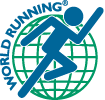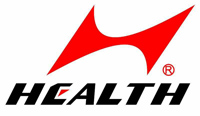Race medicine
23 September 2025, 3pm UTC
Preparing for a success
In October many runners start to plan their running schedule for the following year. Many people are experienced in long-distance running but others may be starting their journey.
One of the first questions everybody should ask themselves when contemplating running long distances should be: Am I healthy enough to perform all the training needed for a satisfying result?
Medical check before training:
No matter how old you are, every runner should undergo a physical examination with a doctor of sports medicine in advance of their winter training. Runners should be healthy enough to ensure safe and successful training as well as the competition itself.
Essential examinations for runners:
A thorough medical history and physical examination should include a resting ECG and a stress ECG, usually on a bike or treadmill. Also check lung function, blood values and, if needed, perform spiroergometry. Endurance athletes in particular can be misled by the feeling “I’m fit.” Some heart conditions or circulatory problems show no symptoms at first and only become apparent under stress. Undetected infections or blood pressure issues may also show up during the check-up. The physical examination should include a very detailed check of feet, legs, hips and spine as well as muscular balance and flexibility. This helps the runner to detect pitfalls very early and work on any deficiencies during the winter.
Training, time commitment and recovery:
The second question is about the amount of time the runner is willing to spend: if you plan to run a marathon you need a full year of preparation. Six months before the actual race you should be able to run 60 minutes without a break. Training during the winter months should include 3–4 sessions a week. To stay healthy and free of injuries, strength and flexibility should be part of your training throughout the whole year. This helps to ensure an efficient running technique as well as minimizing the forces on joints, cartilage, tendons, and muscles. Finally, if you are caught by an infection, give yourself the time to recover properly before getting back into your running shoes. In the end, the finish line as well as a beautiful medal will be yours – together with a big smile.






